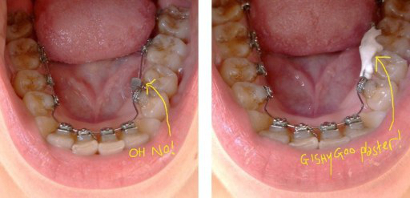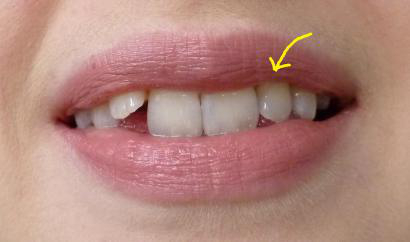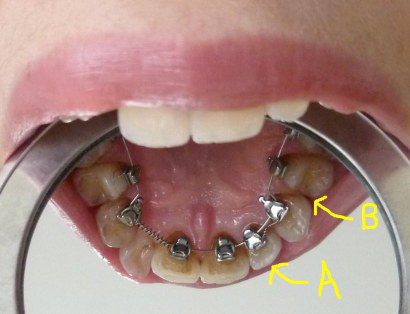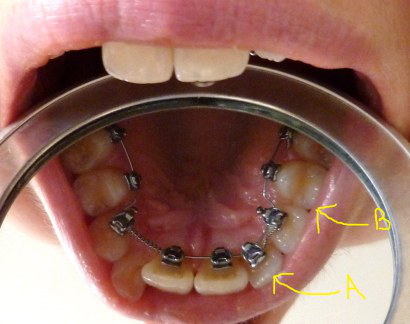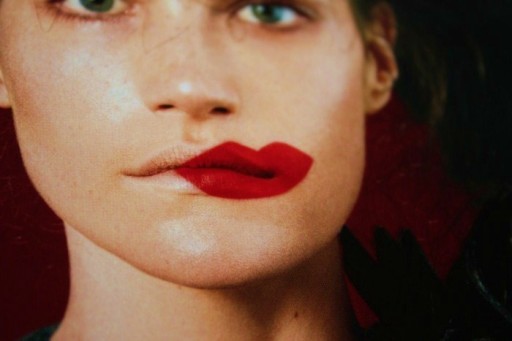On Friday evening I was just brushing my teeth and getting ready for an evening out with friends when one of my lower lingual brackets broke off my tooth. Arrrgh!
Typically, it happened about 3o minutes after my orthodontist closed and as it happened on a Friday I’m stuck with it broken all weekend. However I sent my ortho a text message and he immediately replied to check I wasn’t in pain and has managed to squeeze an appointment for me before work on Monday. You don’t get that kind of service on the NHS do you!?
The bracket broke away at the adhesive so it still has the wire looped through it. It’s the spinning and moving up and down the wire that’s annoying more than anything – thankfully it’s not sore. My main concern is it coming off the wire somehow and that I could accidentally swallow it, so I have used a blob of Gishy Goo to stick it in one place which seems to be working well. If I lose a bracket it costs £45 to replace so I could really do without that! Even if you don’t use it to stop your lingual braces rubbing I’d suggest it’s well worth keeping a tube of Gishy Goo in your bag for this purpose as I’m not sure ordinary wax would be sticky/protective enough.
I promise to post a full wax vs Gishy Goo review soon…
…………………………………………………………………………………………………………………………………………………………..
Update: All fixed – only took 10-15 minutes to have the bracket glued back on and I was back at my desk bang on time! While I was there my orthodontist mentioned that my teeth are moving nicely which is great and I’m beginning to feel quite excited about my first adjustment in two weeks. Tune back in then!
